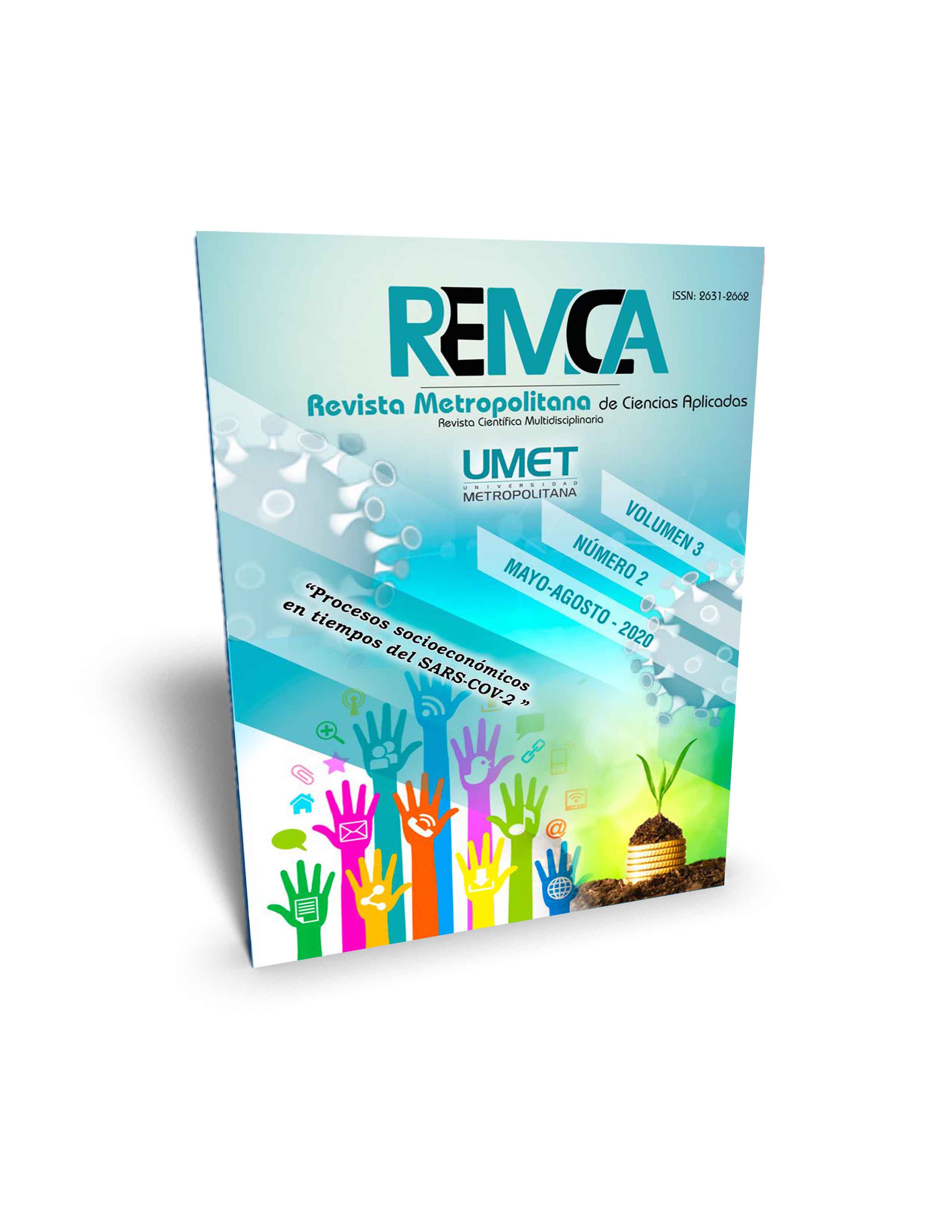Socioeconomic and environmental profile of artisanal fishing in the Huayla river community
DOI:
https://doi.org/10.62452/g3byg061Keywords:
Artisanal fisheries, Socioeconomic, coastal conflict, environmental conflict, unsatisfied basic servicesAbstract
This article presents an overview of the socioeconomic and environmental profile of artisanal fishing in the Huayla River community of the Puerto Bolivar Canton Machala Parish (El Oro-Ecuador). The objective of the research is to analyze the socioeconomic profile based on indicators of social, economic and environmental dimensions. The research was descriptive of a transversal type, which was carried out in a unique moment with the presentation of surveys to the fishermen of the commune that consists of 30 fishermen. The age range that prevails in the fishing activity is between 43% (18-30 years), and the educational level 75% have primary education which is directly related to the level of income that they obtain 60% of them have an income of 394 dollars. The Chi-square test was applied to determine significance (p<0.05) in the indicators economic income/education level and age of the fisherman/high production month. It is concluded that there is a relationship between environmental, economic and social indicators. A relevant data could be evidenced in the investigation in the social indicator that the people who live in a single home 36.67% have a range of (2-4 people per home), followed by 30% of group members (4-6 people) and these in turn live in the home of a relative 53.33% that is to say more than half do not have their own home which relates a low socioeconomic stratum.
Downloads
References
Álvarez, M., Ruiz, G., Navia, D., & Cortes, C. (2017). La visualización femenina en la pesca artesanal: transformaciones culturales en el sur de Chile. Polis. Revista Latinoamericana, 16(46), 175-191.
Chica, W. (2018). Análisis socioeconómico de la actividad pesquera en la asociación de mariscadores los isleños de Puerto Bolívar, periodo 2015 – 2017. (Trabajo de titulación). Universidad Técnica de Machala.
Ecuador. Cámara Nacional de Pesca. (2017). Sector pesquero y acuícola cuentan con su propio Ministerio. https://camaradepesqueria.ec/sector-pesquero-acuicola-cuentan-propio-ministerio/
Ecuador. Ministerio de Agricultura y Ganadería. (2015). Informe de gestión Ministerio de Agricultura, Ganadería, Acuacultura y Pesca. MAGAP. http://www.acuaculturaypesca.gob.ec/wp-content/uploads/downloads/2016/07/Informe-de-Gestión-VMAP.pdf
El Telégrafo. (2014). La pesca es el motor de desarrollo de Puerto Bolívar. https://www.eltelegrafo.com.ec/noticias/regional/1/la-pesca-es-el-motor-de-desarrollo-de-puerto-bolivar
Espinoza, F. (2019). Los pescadores en el litoral central durante los siglos coloniales (siglos XVII-XVIII), memoria e identidad en movimiento. Cuadernos de Historia (Santiago), (50), 189–223.
Herrera, M., Castro, R., Coello, D., Saa, I., & Elías, E. (2017). Puertos caleta y asentamientos esqueros artesanales en la costa continetal de Ecuador. Instituto Nacional de Pesca.
León, L., Gutiérrez, L., & Ramírez, L. (2015). Caracterización socioeconómica y tecnológica de la producción del plátano en el bajo occidente del Departamento de Caldas. Luna Azul, (41), 184–200.
Narchi, N., Domínguez, W., & Rodríguez, D. (2018). El ocaso de la abundancia: pescadores y pesquerías en Bahía Magdalena en el siglo XXI. Relaciones. Estudios de Historia y Sociedad, 39(153), 167-198.
Navarro, A. (2013). Pescadores cucapá contemporáneos: investigación y video colaborativo en un escenario de conflicto. Horizontes Antropológicos, 19(39), 205-240.
Salazar, S. (2012). Situación actual de la pesca artesanal en Costa Rica. Anuario de Estudios Centroamericanos, 39(1), 311-342.
Downloads
Published
Issue
Section
License
Copyright (c) 2020 Andrea Belén Banchón Torres, Harry Vite Cevallos, Héctor Carvajal Romero (Autor/a)

This work is licensed under a Creative Commons Attribution-NonCommercial-ShareAlike 4.0 International License.
Authors who publish in Revista Metropolitana de Ciencias Aplicadas (REMCA), agree to the following terms:
1. Copyright
Authors retain unrestricted copyright to their work. Authors grant the journal the right of first publication. To this end, they assign the journal non-exclusive exploitation rights (reproduction, distribution, public communication, and transformation). Authors may enter into additional agreements for the non-exclusive distribution of the version of the work published in the journal, provided that acknowledgment of its initial publication in this journal is given.
© The authors.
2. License
The articles are published in the journal under the Creative Commons Attribution-NonCommercial-ShareAlike 4.0 International License (CC BY-NC-SA 4.0). The terms can be found at: https://creativecommons.org/licenses/by-nc-sa/4.0/deed.en
This license allows:
- Sharing: Copying and redistributing the material in any medium or format.
- Adapting: Remixing, transforming, and building upon the material.
Under the following terms:
- Attribution: You must give appropriate credit, provide a link to the license, and indicate if any changes were made. You may do this in any reasonable manner, but not in any way that suggests the licensor endorses or sponsors your use.
- NonCommercial: You may not use the material for commercial purposes.
- ShareAlike: If you remix, transform, or build upon the material, you must distribute your creation under the same license as the original work.
There are no additional restrictions. You may not apply legal terms or technological measures that legally restrict others from doing anything the license permits.




